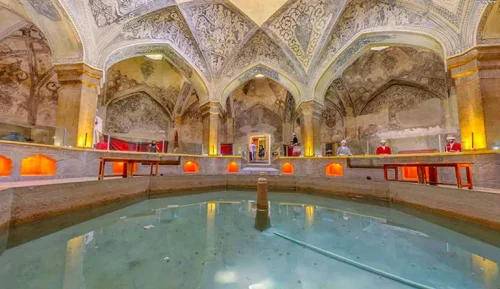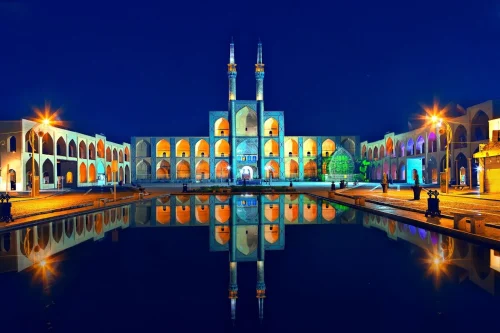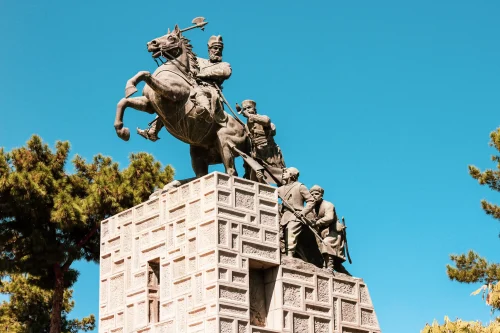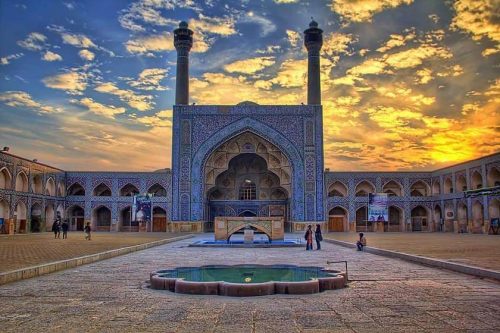Marble Palace of Tehran: A Prominent Symbol of Iran’s History
The Marble Palace in Tehran is one of the most important and prominent historical buildings in Iran, symbolizing the grandeur and magnificence of various historical eras of this country. Known for its stunning architecture and extensive use of marble, the palace not only served as a residence for rulers but is also recognized as a unique artistic masterpiece. The significance of the Marble Palace in Iranian history is highlighted by its role in major historical and cultural events. Visiting this structure offers a great opportunity to get acquainted with Iran’s rich cultural history. For more information about the history and significance of the Marble Palace of Tehran, you can visit the Iran Charter website. The palace, with its unique design, has had a significant impact on Iranian architecture, inspiring many architects in subsequent periods. Additionally, as one of Tehran’s key tourist attractions, the Marble Palace annually hosts thousands of domestic and foreign tourists who visit Tehran to see this valuable historical monument. Iran Charter provides reliable and quality tourism services to help you enjoy your visit to this historical site to the fullest. You can plan your trip and obtain plane tickets to Tehran through the Iran Charter website for a unique experience of Iran’s history and culture. With its historical and cultural values, the Marble Palace of Tehran always holds a special place in the hearts of Iranians and foreign tourists, making a visit essential for anyone interested in Iran’s history and culture.
Marble Palace of Tehran: A Symbol of Iran’s Historical Splendor
The Marble Palace of Tehran, with its unparalleled architecture and extensive use of marble, stands as one of the most prominent historical icons of Iran. This palace has played a significant role not only as a residence for rulers throughout various historical periods but also as a reflection of Iranian culture and art. The unique structure of the Marble Palace, combining traditional and modern elements, showcases the achievements of Iranian architecture, capturing the attention of numerous researchers and tourists from both domestic and international origins.
The History of Tehran’s Marble Palace
Tehran’s Marble Palace was constructed during the Qajar era and has witnessed numerous historical changes and transformations over time. During the Qajar period, the palace served as the official residence of Iranian kings and played an important role in hosting official ceremonies and events. Over time, despite regime changes, the Marble Palace has been preserved and transformed into one of Tehran’s main tourist attractions. The history of this palace reflects the political and social changes in Iran over the past centuries.
The Stunning Architecture of Tehran’s Marble Palace
The architecture of Tehran’s Marble Palace combines traditional Iranian styles with modern architectural elements, enhanced with beautiful artistic decorations, which lend a majestic appearance to the building. The palace boasts large rooms and halls with high ceilings and ornamented walls, each recounting stories of Iran’s history and culture. Proper lighting and interior design tailored to each section offer visitors a unique experience. Additionally, the surrounding gardens, featuring native plants and artistic designs, provide a serene and pleasant environment for relaxation and leisure.
The Cultural Significance of Tehran’s Marble Palace in Iranian History
Tehran’s Marble Palace is not only a beautiful architectural work but also a bearer of Iranian cultural and artistic values. This palace has been a venue for cultural, artistic, and social events, playing a key role in strengthening the national identity of Iranians. Numerous exhibitions, concerts, and cultural events are held here, attracting art and culture enthusiasts from across the country and the world. Moreover, the Marble Palace is of special importance as a site for education and research in various cultural and artistic fields.
Tehran’s Marble Palace: A Destination for Domestic and International Tourists
Visiting Tehran’s Marble Palace offers domestic and international tourists a marvelous opportunity to acquaint themselves with Iran’s rich history and culture. With its various sections and diverse exhibitions, the palace provides a unique experience for enthusiasts of history, art, and architecture. Tourists can become more acquainted with Iranian culture and traditions through this site’s architecture and historical details. Facilities and tourism services provided by Iran Charter also make the journey to this historic site more accessible and enjoyable.
The Role of Tehran’s Marble Palace in Enhancing Iranian Cultural Tourism
Tehran’s Marble Palace has played a significant role in promoting cultural tourism as one of Iran’s cultural attractions. The palace’s preservation and exhibition of historical and cultural artifacts make it capable of attracting tourists interested in culture and history. Hosting various cultural events and art exhibitions has increased visitor numbers and enhanced Iran’s position on the global tourism map. Iran Charter offers reliable and quality transport services, making the journey to Tehran’s Marble Palace more appealing for tourists.
A Guide for Visiting Tehran’s Marble Palace for Tourists
To maximize your visit to Tehran’s Marble Palace, it is advisable to plan carefully to ensure you can enjoy all parts of the building. Visitors should obtain necessary permits and familiarize themselves with visiting hours. Utilizing tour guides and the information available on the Iran Charter website can also optimize your visit. It’s recommended to wear suitable and comfortable clothing and allocate ample time to stroll through the beautiful gardens of the Marble Palace.
Cultural Activities and Events at Tehran’s Marble Palace
Tehran’s Marble Palace hosts a variety of cultural activities and events, creating a unique experience for visitors. From traditional music concerts to contemporary art exhibitions, the palace offers an ideal environment for art and culture enthusiasts. Moreover, scientific and academic sessions held at this historic location play a key role in enhancing public knowledge and culture. Iran Charter collaborates in organizing these events, increasing the attractiveness of Tehran’s Marble Palace for tourists.
The Influence of Tehran’s Marble Palace on Contemporary Iranian Architecture
Tehran’s Marble Palace, with its stunning architecture, has significantly influenced contemporary Iranian architecture. Young Iranian architects, inspired by the designs and styles used in this palace, strive to create buildings with modern appearances while preserving the authenticity and traditions of Iranian architecture. These influences are evident in the country’s commercial, residential, and public buildings, highlighting the importance and status of Tehran’s Marble Palace in developing Iranian architecture.
The Future and Maintenance of Tehran’s Marble Palace: Conservation and Restoration Plans
Preserving Tehran’s Marble Palace is of utmost importance to ensure future generations can benefit from this cultural heritage. Regular conservation and restoration programs are essential to maintain the structure and beauty of the palace. The use of modern technologies in the repair and restoration of the building, without compromising its authenticity and history, is considered vital. Iran Charter collaborates with relevant organizations in implementing these programs to ensure that Tehran’s Marble Palace remains in optimal condition to welcome visitors.
Frequently Asked Questions
- Where is the Marble Palace of Tehran located?
- The Marble Palace is located on Jamalzadeh North Street, Marble Street, Tehran.
- What is the history of the Marble Palace of Tehran?
- The building of the Marble Palace was constructed in 1936 by a famous architect named
- What is the current use of the Marble Palace?
- Currently, the palace serves as the center
- What are the unique features of Tehran’s Marble Palace?
- Some prominent features of the Marble Palace include











